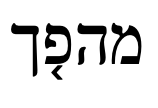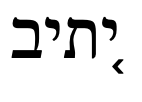Here are some highlights of what we have been exploring in class during the month of October (and end of September):
On Wednesdays, one of our focuses for Hebrew in 6th grade is the study of Cantillation, or Trope. Trope marks, or Ta’amei Hamikrah in Hebrew, have three main functions in the reading of sacred texts:
1. To provide melody
2. To provide punctuation
3. To provide pronunciation by indicating syllabic stress
You can watch this helpful introduction to trope video I created to learn more about what we are learning:
We can divide the trope symbols into 6 main groups, or clauses. Each week, or over the course of two weeks, we will learn 1 of the 6 clauses. This material will be introduced and practiced using a variety of methods including oral call and response, integration of a physical hand-sign for each symbol, visual identification of the trope symbol and Hebrew spelling of the symbol, highlighting of each clause, identification of examples of symbols and clauses through various examples, chanting games, and eventual practice chanting from Torah.
Resources for this curriculum include the packet created for this year, audio and video recordings, which can all be found on the Trope page of this website.
So far, we have covered the following trope clauses:
 Sof-Pasuk and Sof Sof-Pasuk
Sof-Pasuk and Sof Sof-Pasuk
The sof pasuk symbol is the largest mafsik or separator, it acts as the period of the verse (sentence), it means “end of verse”. It consists of three symbols: Mercha Tipcha and Sof-Pasuk. You can practice chanting this clause here: https://youtu.be/SS9kU4PUgH4. When you come to the last Sof-Pasuk of the reading or aliyah, it is chanted with a special melody called Sof Sof-Pasuk, or Final End of Verse, practice it chanted here: https://youtu.be/7Xo9e8WeEdU.
 Etnachta
Etnachta
The second clause in trope is the Etnachta clause, which consists of the symbols: Mercha Tipcha Munach and Etnachta. We highlight this clause in yellow. Practice chanting Etnachta here: https://youtu.be/7Xo9e8WeEdU
 Katon
Katon
The third clause in trope is a longer clause, and will be taught over several weeks, it is the Katon clause. It is highlighted in green. Katon includes the following symbols: Kadma Mahpach Pashta Munach Katon.
The Katon Clause includes a couple of unique things, including 2 sets of identical twins. Identical twins of course are symbols that look identical, however, like any real set of siblings, they might look the same but they have completely different personalities and functions.
Twin #1 – Pashta and Kadma
Pashta has some rules that make it unique:
 Pashta
Pashta
1. The symbol for Pashta is always on the very last letter of the word
2. Pashta is always followed by Katon or Munach Katon
3. Pashta is a separator; Pashta PAUSES
4. Pashta can also exist as a ‘double pashta’ such as the word B’veitecha in the 6th line of the V’ahavta.
 Kadma
Kadma
1. The symbol for Kadma can be on any letter, except the last letter
2. Kadma has a different melody than Pashta, it’s melody is a smaller interval
3. Kadma CONNECTS
To hear Kadma, and the rest of Katon: https://youtu.be/PtrgUMR252U
As part of explaining the differences between the identical twin symbols. We explored how each trope symbol can function as either a connector or a separator. Symbols that connect tell the person reading to keep going, to connect to the next word. Symbols that are separators tell the reader to take a breath, to pause, before continuing. Each and every symbol is either a connector or a separator. I have created a handy document to explain how the symbols function: Trope Curriculum – Trope Combinations and their Functions.
Twin #2 – Mahpach and Y’tiv
The second set of identical twins are Mahpach and Y’tiv. We learned about Mahpach last week.
 Mahpach
Mahpach
1. Mahpach is always followed by Pashta
2. Mahpach is a connector
 Y’tiv
Y’tiv
1. The symbol for Y’tiv always comes before the word (to the right of the word)
2 . Y’tiv is always followed by Katon or Munach Katon
3. Y’tiv pauses, it’s a separator
To hear the Y’tiv clause: https://youtu.be/nktsMqTvX0o